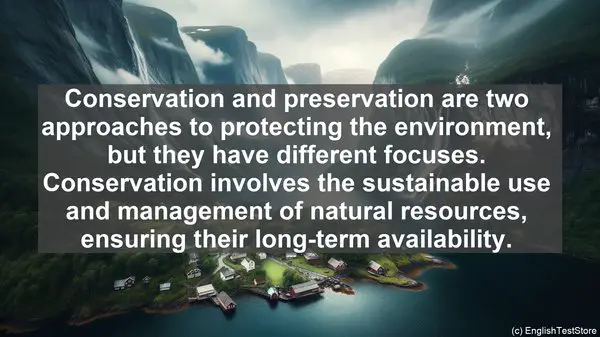Introduction
Today, we’re going to delve into the world of ecological restoration. While it’s an exciting field, it’s not without its challenges. One of the common stumbling blocks is the confusion between certain words. In this lesson, we’ll tackle the top 10 words that often trip up students. By the end, you’ll have a solid grasp of these terms, making your journey in ecological restoration much smoother. Let’s get started!
1. Ecosystem vs. Habitat
Often used interchangeably, ecosystem and habitat have distinct meanings. An ecosystem refers to the entire community of living organisms, along with their physical environment. On the other hand, a habitat is a specific place within an ecosystem where a particular organism or species resides. So, while an ecosystem is like a vast web of life, a habitat is a more localized, specific area.
2. Native vs. Non-native Species
When it comes to ecological restoration, the distinction between native and non-native species is crucial. Native species are those that naturally occur in a particular ecosystem, having evolved and adapted to its conditions over time. Non-native species, also known as invasive species, are introduced to an ecosystem, often causing harm to the native flora and fauna. Restoration efforts typically focus on reintroducing and preserving native species.

3. Rehabilitation vs. Restoration
While both terms involve improving degraded ecosystems, there’s a slight difference. Rehabilitation refers to the process of restoring an ecosystem to a functional state, often through human intervention. Restoration, on the other hand, aims to bring the ecosystem back to its original, pre-disturbance condition. So, rehabilitation is like a repair job, while restoration is a more comprehensive, holistic approach.
4. Biodiversity vs. Species Richness
Biodiversity and species richness are related concepts, but they’re not the same. Biodiversity encompasses the variety of life in an ecosystem, including not just the number of species, but also their genetic diversity and the different ecosystems they inhabit. Species richness, on the other hand, refers specifically to the number of species in a given area. So, while species richness is a part of biodiversity, it doesn’t capture its full complexity.
5. Succession vs. Disturbance
In ecological restoration, understanding the dynamics of succession and disturbance is crucial. Succession refers to the predictable, orderly changes in an ecosystem over time, often following a disturbance. Disturbance, on the other hand, is an event that disrupts the ecosystem, such as a fire or a storm. While disturbances can be destructive, they also play a vital role in shaping ecosystems and initiating the process of succession.
6. Conservation vs. Preservation
Conservation and preservation are two approaches to protecting the environment, but they have different focuses. Conservation involves the sustainable use and management of natural resources, ensuring their long-term availability. Preservation, on the other hand, aims to protect nature in its pristine state, often through strict regulations and minimal human intervention. Both approaches are important, and the right strategy depends on the specific context.

7. Endemic vs. Endangered
Endemic and endangered are terms often used in discussions about species conservation. Endemic species are those that are found exclusively in a particular geographic area and nowhere else. Endangered species, on the other hand, are those that are at risk of extinction. While some endemic species may also be endangered, not all endangered species are necessarily endemic.
8. Fragmentation vs. Connectivity
Fragmentation and connectivity are concepts that relate to the spatial arrangement of habitats. Fragmentation occurs when a large, continuous habitat is divided into smaller, isolated patches. This can have negative effects on species that require large areas to thrive. Connectivity, on the other hand, refers to the presence of corridors or pathways that allow for movement between habitats. Maintaining connectivity is crucial for sustaining healthy populations and promoting genetic diversity.
9. In-situ vs. Ex-situ Conservation
In-situ and ex-situ conservation are two strategies for preserving biodiversity. In-situ conservation involves protecting species in their natural habitats, often through the establishment of protected areas. Ex-situ conservation, on the other hand, involves the removal of species from their natural habitats and their preservation in controlled environments, such as zoos or botanical gardens. Both approaches have their merits and are often used in combination.
10. Baseline vs. Target Conditions
When planning a restoration project, it’s important to have a clear understanding of the baseline and target conditions. The baseline condition refers to the state of the ecosystem before any restoration efforts are undertaken. The target condition, on the other hand, is the desired outcome, the vision for what the ecosystem should be like after restoration. By comparing the baseline and target conditions, progress can be measured, and the success of restoration projects can be evaluated.
